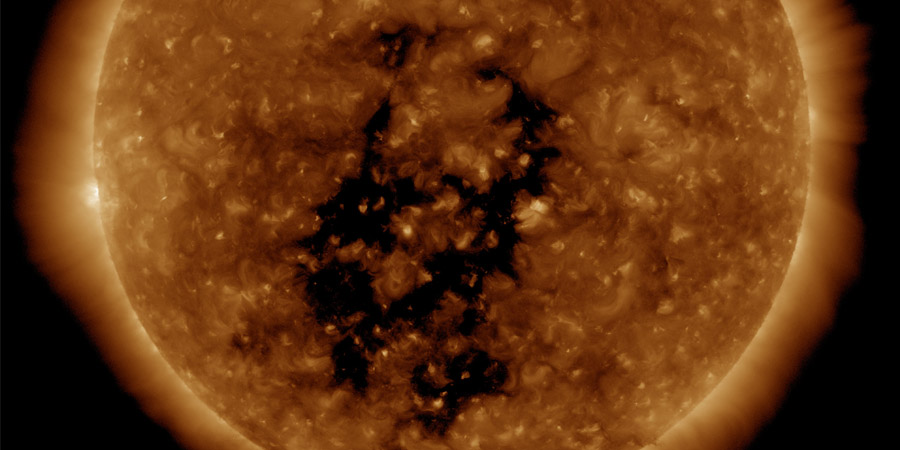Coronal hole faces Earth
Wednesday, 7 November 2018 19:08 UTC

A fairly large but patchy coronal hole is facing our planet today.
This coronal hole has been around for a little while now and if we compare this coronal hole with how it looked like during the previous rotation we can conclude that it actually increased in size. It remains rather patchy/poorly defined which we can see on the SDO AIA images at a wavelength of 193 Ångström.
A transequatorial coronal hole is facing Earth. Enhanced solar wind could arrive in ~3 days. Follow live on https://t.co/bsXLidnzGh pic.twitter.com/KFDcyYEYYY
— SpaceWeatherLive (@_SpaceWeather_) November 7, 2018
A high speed solar wind stream flowing from this coronal hole is expected to arrive at Earth late on 9 November. During the previous rotation this coronal hole caused active geomagnetic conditions (Kp4) but considering that this coronal hole increased in size it isn't impossible that we might reach minor G1 geomagnetic storm conditions this time around. The NOAA SWPC seems to agree and issued a minor G1 geomagnetic storm watch for this Friday (9 November) and Saturday (10 November).
Thank you for reading this article! Did you have any trouble with the technical terms used in this article? Our help section is the place to be where you can find in-depth articles, a FAQ and a list with common abbreviations. Still puzzled? Just post on our forum where we will help you the best we can!
Latest news
Latest forum messages
Support SpaceWeatherLive.com!
A lot of people come to SpaceWeatherLive to follow the Sun's activity or if there is aurora to be seen, but with more traffic comes higher server costs. Consider a donation if you enjoy SpaceWeatherLive so we can keep the website online!

Space weather facts
| Last X-flare | 2025/03/28 | X1.1 |
| Last M-flare | 2025/04/22 | M1.3 |
| Last geomagnetic storm | 2025/04/21 | Kp5+ (G1) |
| Spotless days | |
|---|---|
| Last spotless day | 2022/06/08 |
| Monthly mean Sunspot Number | |
|---|---|
| March 2025 | 134.2 -20.4 |
| April 2025 | 126.5 -7.7 |
| Last 30 days | 124.6 -4.5 |


